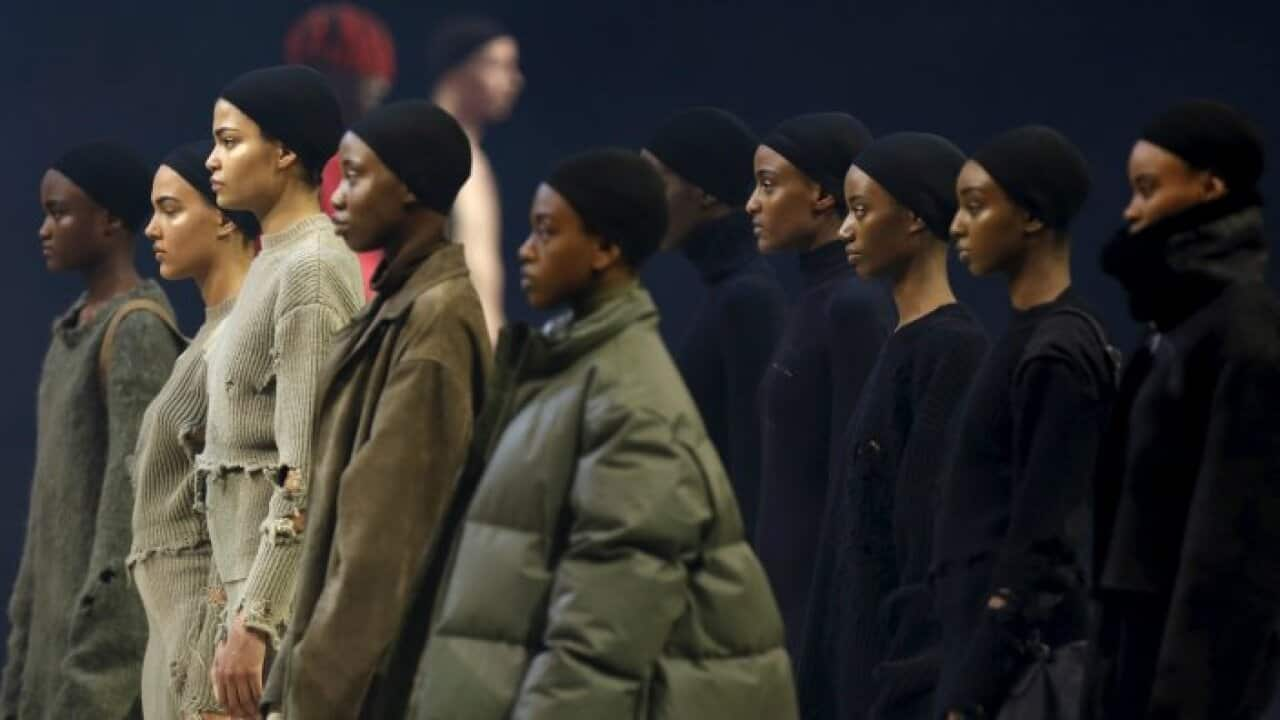International fashion is as eclectic as the many nations that comprise it, with deeply ingrained cultural ties as SBS VICELAND's State of Undress explores.
As a scary, cheeky and plain bemusing companion to the series, here we present fashion trends that have caused controversy and raised eyebrows around the world.
The Burkini – France

Source: Supplied
Islam has of course become a sensitive, highly debated issue in France after several terrorist attacks; with the Nice incident occurring the following month after the city was hit by the Bastille Day attack.
The French government minister for women’s rights Laurence Rossignol told the ban is to protect Muslim women, not to vilify them. That sentiment gave rise to the accusation that the government was infringing women’s rights.
“The burkini is not some new line of swimwear,” said Rossignol, “it is the beach version of the burqa and it has the same logic: hide women’s bodies in order to better control them.”
France’s highest administrative court has overturned the ban in one Riviera town, which could set a precedent for future rulings.
The Garbage Bag Hat - London

Source: Supplied
This from the brilliant mind of designer Christopher Kane who had his models walk the runway wearing the meticulously designed headpieces during this year’s London Fashion Week.
“There is an idea of beauty expired. Dead and thrown away beauty often looks better than when it was supposedly alive," Kane in his show notes.
Ok, then.
We’re not sure how well this fashion has caught on – fashions on the runaway can be too weird even for the fashion industry – so rather than calling fashion forward, we’re calling bulls**t. It’s stupid and pretentious. It’s hobo meets granny chic, no offence to hobos and grannies.
The H&M ‘Jewish Prayer Scarf’ – USA (definitely not Israel)

Source: Supplied
For Sears it was the swastika ring, for repeat offender Urban Outfitters socks with the Hindu deity Ganesh, for Victoria’s Secret it was their ‘Sexy Little Geisha’ lingerie. The list goes on.
Swedish retailer H&M got into hot water this year for selling a scarf that resembles the traditional Jewish prayer shawl or tallit. US$17.99 (AU$24) bought you a cream coloured scarf with black stripes and ‘knotted ends’, not dissimilar to the tallit. See the comparison above, the H&M faux pas is on the right.
After an inevitable social media backlash, the scarf was withdrawn from sale in Israeli stores.
Scorpion Nails – Mexico

Source: Supplied
Not a little disturbingly, Garcia is a ‘scorpion enthusiast’ and ‘scorpion artist’ who entombs the little bugs for all time, or until the next nail craze or your acrylics pack it in. Think of them as fossil nails.
Scorpions of course are lethal and even lacquered up dead baby ones can still be dangerous. What price for fashion?
The Gold/Blue dress – Earth

Source: Supplied
Was it a screen-tilting conspiracy? Photoshop diddling? The vagaries of eyesight?
In our age of online addiction, short attention spans and the need to argue digitally, it was the fleeting meme we deserved and needed at that moment.
White and gold? Blue and black? (Decide for yourself if you’re one of the few who haven’t already, the original image can be seen in the middle in the pic above.)
You could say ‘Who gives a flying frock?’ if it weren’t for the millions of people around the globe who did. The hashtag #TheDress was the most used globally at the peak of the frenzy.
Reclaim the Bindi – Earth

Source: Supplied
A recurring sentiment was expressed by @tashformers;
“#reclaimthebindi because the kids that made me cry when they made fun of me in ethnic clothes are the same that love wearing bindis now”
Nazi Chic - Asia

Source: Supplied
In Thailand, t-shirts with Hitler’s cartoonish visage merged with pandas, Teletubbies (replete with swastika antenna) and even a mustachioed heil-ing Ronald McDonald are a common sight. And the country has courted controversy with Nazi-themed dress ups for school parades and sporting activities among others.
Popular styles include ‘swastikawaii’ or ‘cute swastika’ and ‘führer chic’, the cute and cuddly Teletubby kind.
On the whole, it seems the trend isn’t a mass Prince Harry style aberration nor does it signify an affiliation with fascist ideology, but more an attraction to the absurd. Behind it is a lack of education about Nazi Germany in Asian youth as well a pushback against Nazi appropriation of Asian motifs.
"In Asia, the swastika is a centuries-old symbol of peace and auspiciousness," Laura Kidd, an expert in the use of Nazi symbols in modern fashion told last year, "and is often associated with religious beliefs; swastikas appear in many Asian temples, similar to the use of the cross in Christian churches."
But the softening of Hitler in Asian popular culture could have a have a desensitising impact says Kidd.
"When Hitler is depicted in such a non-threatening manner, people may find it difficult to imagine that same man ordered millions of people to the gas chambers."
Heavy Metal Wear – Botswana

Source: SBS
The Wall Street Journal this year from a local gig, speaking to Botswanans who came up with nicknames that matched their outfits like “Gunsmoke,” “Hardcore,” “Fire Darkness” and “Mad Dog.”
The fashion nods to the fusion of heavy metal and African culture in the style of music.
Eyeball Jewellery – The Netherlands

Source: Supplied
It was while working on a treatment using implantable devices for glaucoma that Melles came up with the idea.
“I thought, Why not make special shapes people could wear for fun?" Melles The New York Times Magazine. Well of course!
The popularity of the jewellery has spread to Europe, Los Angeles and New York where in 2013 you could have the ten minute procedure performed for the bargain price of $US3,000 ($AU4,061) and exchange eyeball bling for $US1,000 ($AU1,354).
Again we say, what price for fashion?
The Facekini - China

Source: Supplied
Forget sunscreen, the ‘facekini’ - which looks like it’s been inspired by a psycho mask from a horror movie, ‘bank robber chic’ and Pussy Riot - is used largely by women in China to protect them from sunburn on the beach and to maintain a pale complexion, which is highly prized there.
Invented by former accountant Zhang Shifan, facekini’s began appearing in 2004. They come in a variety of colours and creepy designs.
Bagelheads - Japan

Source: Supplied
It looks like what its name suggests, like bagels bulging out of the forehead. The effect is created by injecting saline that causes a swelling distortion. The bagel shape is created by pressing your thumb in the middle of your forehead as the saline pumps in. The infusion process takes two hours with the effect lasting only one night.
Photographer and journalist Ryoichi "Keroppy" Maeda introduced the bulbous forehead trend to Japan (scrotal infusions can also be performed – yikes!) and it’s a fashion worn to clubs and fetish parties.
Post-Hipster Beards! – Hipsterland

Source: Supplied
Yes, it seems that with hipster beards being around for so long now, hipsters are getting bored and going all post-hipster with questionable additions like glitter-drenching and even Christmas baubles and lights!
This was a thing last year and if it hasn’t faded away already we hope it goes out in spectacular, glittery fashion soon.
For a grounded examination of why cultures wear what they do, check out States of Undress on SBS VICELAND every Sunday night at 8:30pm:





